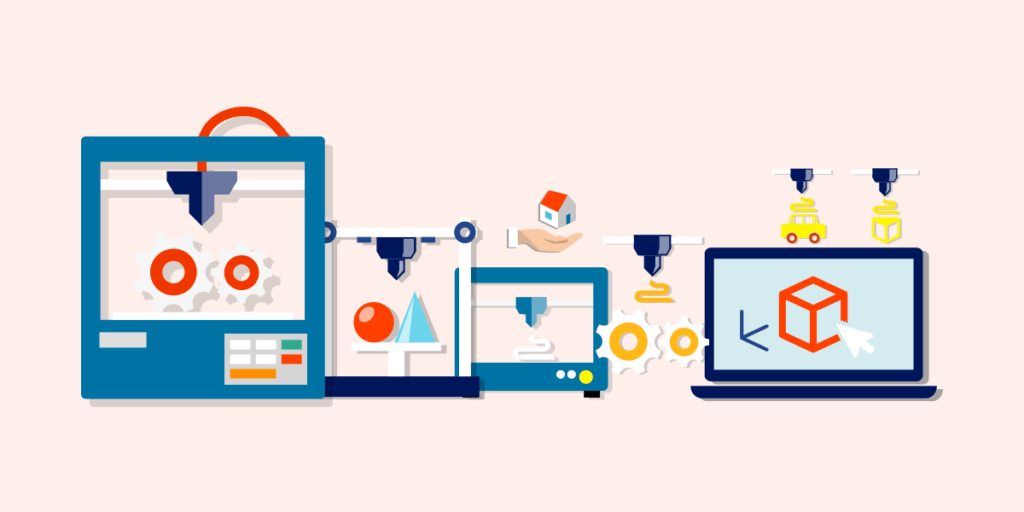The world of 3D printing is without doubt a big one. In recent years, impressive growth has been observed in this industry, with lots of focus on new research and entrepreneurship. This has led to the formation of innumerable business ventures like 3D farms and management platforms and sparked interest in additive manufacturing among industrialists from all over the globe.
The flourishing nature of this evergreen industry and the appeal it has for academia and industrialists means that novel ideas are always in the pipeline. 3D printing has now evolved from a once monotonous technology to a highly eclectic one.
The market is now offering a plethora of options to those interested in purchasing a 3D printer, with each one having its own merits and demerits. This article is dedicated to exploring this diversity in 3D printing. Discussed below are some of the most popular technologies being used these days.

- Fused Deposition Modeling: This technique uses thermoplastic filaments as the printing material. Each layer is allowed to cool down before the subsequent layer is deposited by the extruder. The process often involves supports for new layers, which can later be removed by a soluble liquid. Sanding is enough to smoothen the end product.
- Selective Laser Sintering: A high-precision 3D printing technique that uses a pre-heating gel-like mixture of powders that is deposited on the printer bed, and then sintered by a G-code guided CO2 laser beam. It does not require any supporting material and is suitable for materials such as metals, plastics, nylon, resin, etc.
- Stereolithography: A highly accurate and popular 3D printing method that utilizes liquid photopolymer resins as the printing material. The bed is dipped into the tank carrying this liquid and layers are hardened by an ultraviolet laser beam, with the bed moving downward to accommodate each new layer. Once the process is finished, the product has to be washed with chemicals to remove excess resins and be exposed to a UV source for further hardening.
- Digital Light Processing: The process is similar to stereolithography, with the exception that a traditional light source is used instead of ultraviolet. A Digital Projector Screen is used to guide the light source, which scans the whole layer in one go, speeding up the process.
- Electron Beam Melting: A quick and reliable method for 3D printing metals. Metallic powder is loaded on the printer bed inside a vacuum chamber and solidified by a powerful electron beam. When a layer is completely formed, the bed moves down to make way for more powder that would form the subsequent layer.
- Binder Jetting: This technique employs two materials: a dry powder and a binder. The powder is deposited on the printer bed and immediately after this, the binder is deposited over it via an inkjet to solidify it. By adding colour to the adhesive, multi-coloured objects can be printed. Moreover, this technique supports a variety of powder materials including sand, metals, and ceramic.
- Laminated Object Manufacturing: Heated belts/rollers deposit a thin sheet of printing material on the bed, which is then cut in a certain shape by a laser. Once this is done, heat and pressure are applied to the sheet to bind it to the platform. The platform moves down for printing of subsequent layers, for which a new sheet is rolled over the previous one.
These are only the ones whose manufacturing has been optimized to the point that their commercializing is a matter of calculating risks and luck. There are hundreds of institutions around the world that are funding research into this area. The success achieved so far is phenomenal, with so many game-changing 3D printing technologies turning out to be successful.



